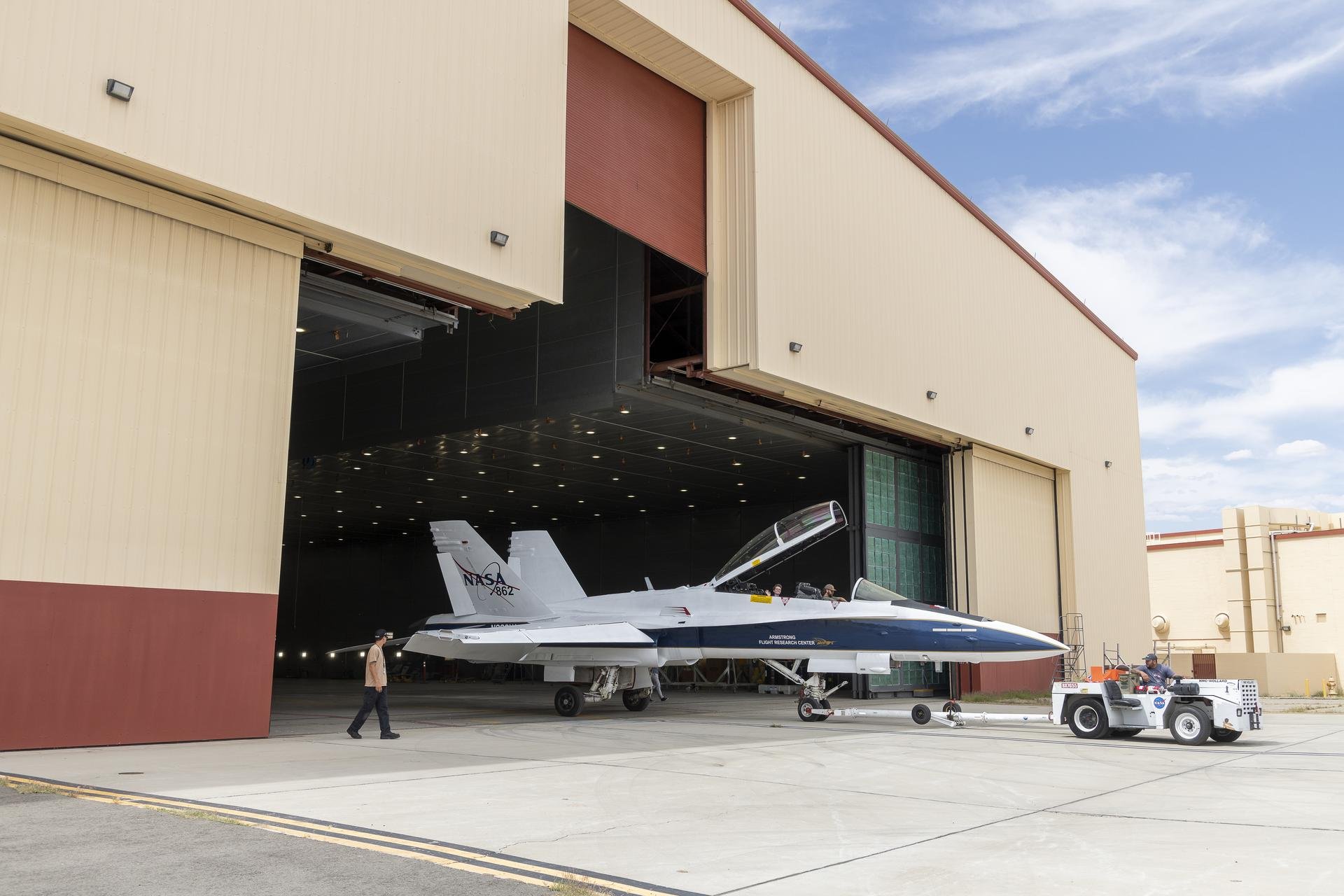
NASA Armstrong Dryden Flight Research Center • LEED Platinum • Edwards, California
Location: Edwards Air Force Base, California, Mojave Desert, California
Industry: Government
Project Size: 35,657 ft²
Certification: LEED NC v2009 Platinum
Project Team:
Owner: Comfort & Hays
Architect: Development One
LEED Consultant and Energy Modeling: GAIA
Structural Engineer: NOVO Construction
Civi Engineer: J.B Young & Associates
MEP: Donn C. Gilmore & Associates
About NASA Armstrong Center
Founded in 1946, the NASA Armstrong Flight Research Center is NASA's premier installation for aeronautical flight research. The Center's charter is to research, develop, verify, and transfer advanced aeronautics, space and related technologies. It is located at Edwards, California on the western edge of the Mojave Desert, 80 miles north of Los Angeles.
On March 1, 2014, the facility was renamed in honor of Neil Armstrong, a former test pilot at the center and the first human being to walk on the surface of the moon.
The center was previously known as the Dryden Flight Research Center from March 26, 1976, in honor of Hugh L. Dryden, a prominent aeronautical engineer who at the time of his death in 1965 was NASA's deputy administrator. It has also previously been known as the National Advisory Committee for Aeronautics Muroc Flight Test Unit (1945), the NACA High-Speed Flight Research Station (1949), the NACA High-Speed Flight Station (1954), the NASA High-Speed Flight Station (1958) and the NASA Flight Research Center (1959).
Armstrong Flight Research Center was also the home of the Shuttle Carrier Aircraft (SCA), a modified Boeing 747 designed to carry a Space Shuttle orbiter back to Kennedy Space Center if one landed at Edwards.
Until 2004, Armstrong Flight Research Center operated the oldest B-52 Stratofortress bomber, a B-52B model (tail number 008) which had been converted to drop test aircraft, dubbed 'Balls 8. It dropped a large number of supersonic test vehicles, ranging from the X-15 to its last research program, the hypersonic X-43A, powered by a Pegasus rocket. The aircraft was retired and is currently on display near the North Gate of Edwards.
Sustainability Features
GAIA managed the LEED certification process, helping the project team earn LEED Platinum and provided energy modeling services to maximize energy efficiency.
Notable Sustainability Impact:
Solar offsets 30% of building energy use.
100% of materials used in paved areas reflect sunlight, helping to keep the area cooler and protect both people and wildlife.
The building is designed to achieve a 61% reduction in indoor potable water.
Rainwater capture and greywater recycle system eliminates the need for permanent irrigation system, further reducing reliance on potable water use.
33% of the building materials came from recycled products, reducing the need for new materials.
LEED outcomes include:
Sustainable Sites
Bicycle racks, showers, and changing facilities encourage bicycle transportation, reducing pollution & land development from automobile use.
Strategic design and construction methods conserve existing natural areas and restore damaged areas to provide habitat and promote biodiversity.
Limits disruption of natural hydrology and maintains natural stormwater flows by promoting infiltration.
Comprehensive site lighting criteria maintain safe light levels while avoiding off-site lighting and night sky pollution.
Water Efficiency
Use of captured rainwater and recycled greywater does not require a permanent irrigation system and eliminates the use of potable water for landscape irrigation.
High-efficiency water closets, lavatory facilities, and urinals were used to reduce annual water use for the building by over 61%.
Energy and Atmosphere
High-efficiency building envelope and systems, and a computer-simulated energy model, were used to assess energy performance and identify the most cost-effective energy efficiency measures to optimize performance.
Generating renewable energy on-site through the use of photovoltaic panels provides 9% of the building’s energy.
Enhanced commissioning ensures optimal performance of all building systems.
Green Power purchase encourages the development and use of grid-source renewable energy technologies on a net-zero basis.
Materials and Resources
Over 94% of construction waste was diverted from landfills.
Over 25% of total building materials were extracted, processed, and manufactured locally (within 500 miles).
Over 2.5% of total building materials were sourced from rapidly renewable resources.
Indoor Environmental Quality
Additional outdoor air ventilation has been provided to improve air quality for improved occupant comfort, well-being, and productivity.
All paints and coatings selected contain low or no levels of Volatile Organic Compounds (VOCs) to reduce indoor air contamination.
Thermal comfort occupant surveys will be implemented 6-18 months after occupancy to assess and verify building thermal comfort over time.






